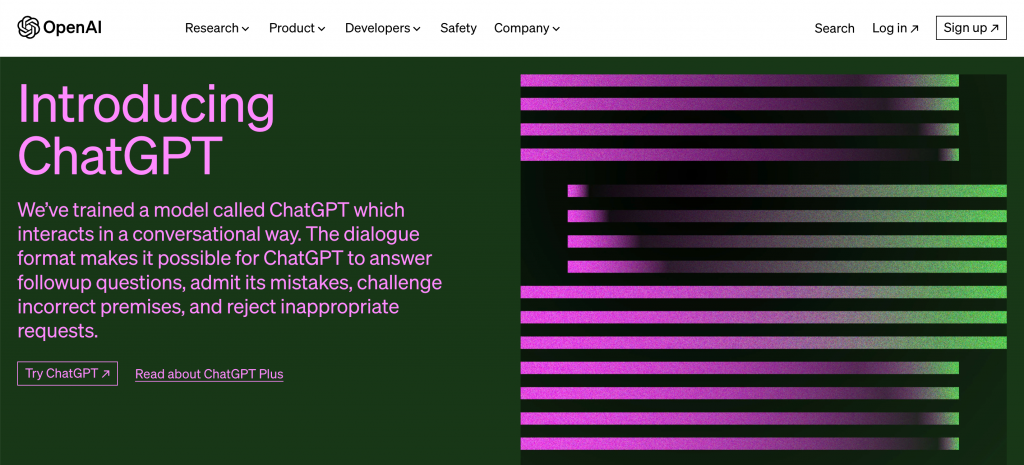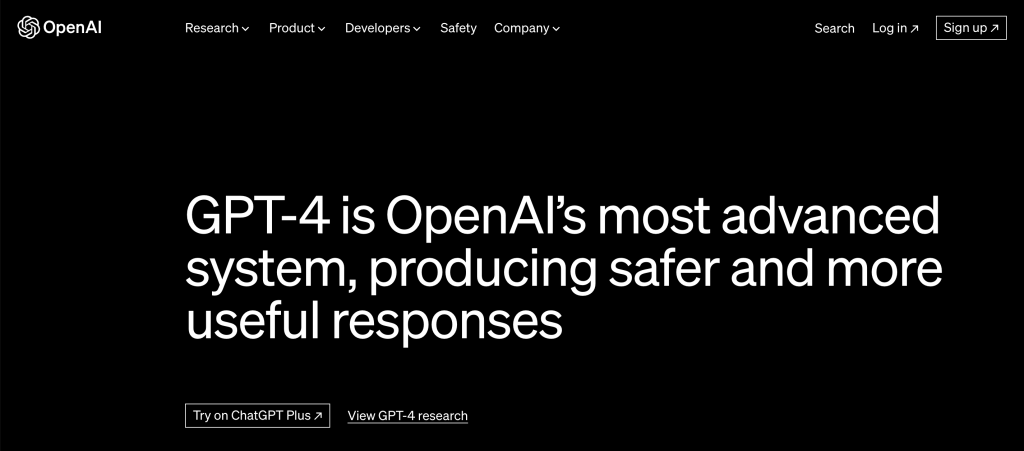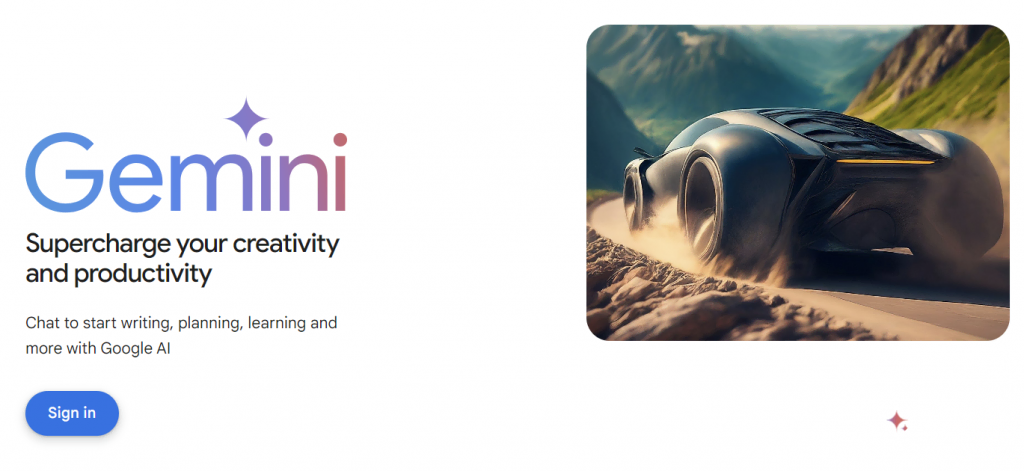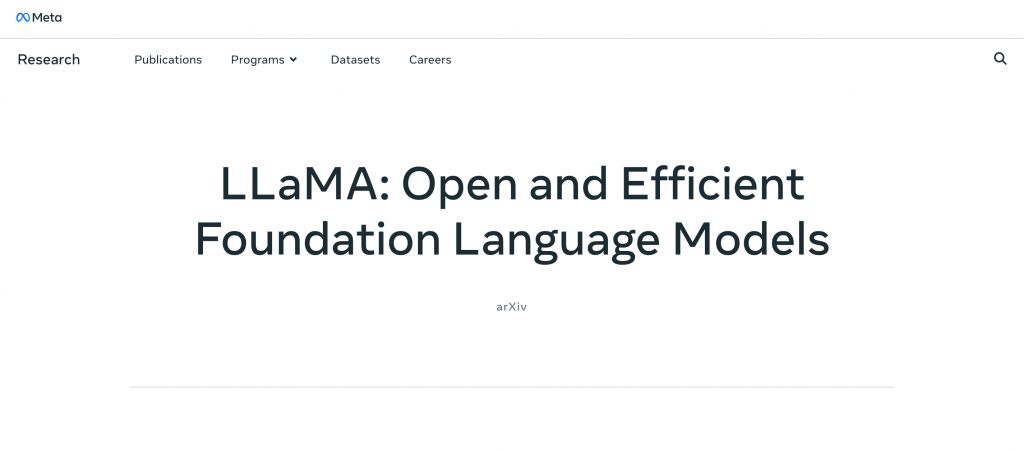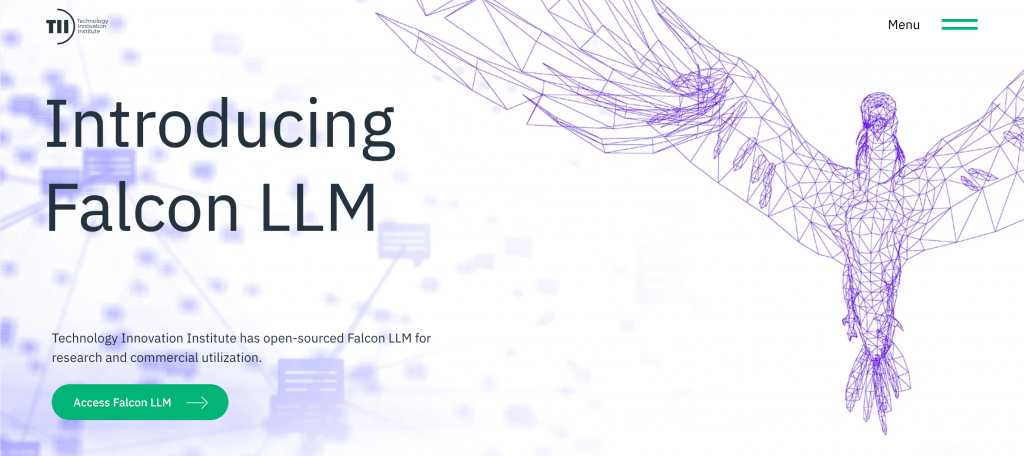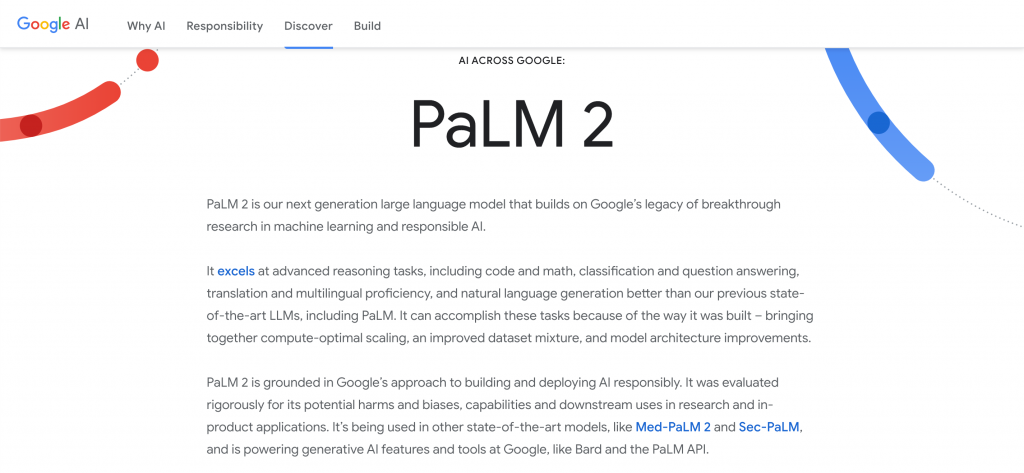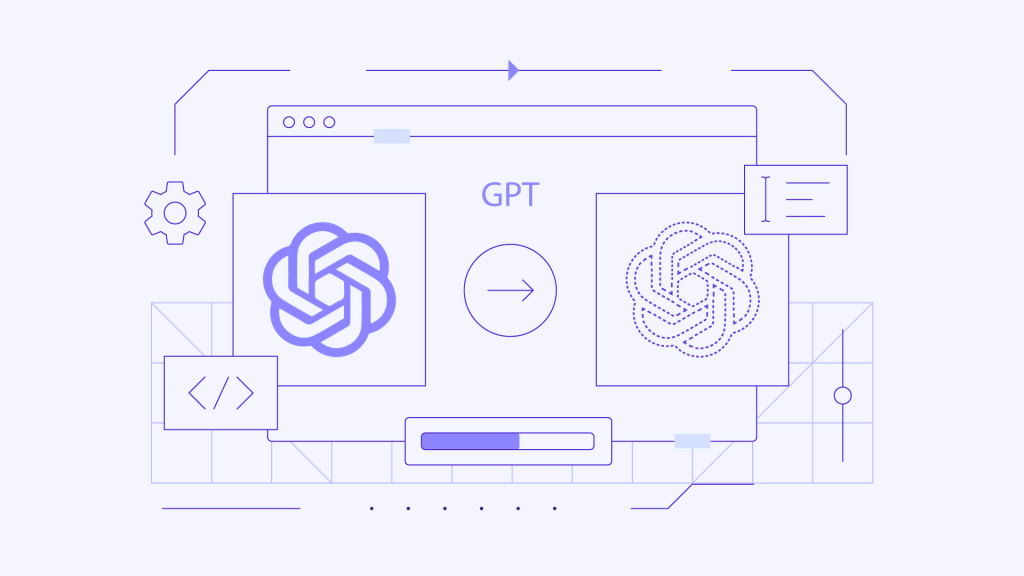Best Large Language Models for 2024 and How to Choose the Right One for Your Site
Large Language Models (LLMs) are emerging as game changers in the field of web development. They’re making website creation, maintenance, and monetization more accessible for those without technical skills.
The ease with which Artificial Intelligence (AI) is able to help beginners undertake complex tasks has established LLMs as essential tools for website owners. However, choosing the best large language model is key.
To simplify this process, our team of experts has crafted this list of large language models, making it easy for you to pick the perfect AI model for your website needs.
These foundation models can effectively process human feedback, making them ideal for AI-powered website creation.
What Are Large Language Models
Large language models are advanced AI systems that are capable of understanding and generating human language. They are built using complex neural network architectures, such as transformer models, inspired by the human brain.
These models are trained on vast amounts of data, enabling them to comprehend context and produce coherent text-based outputs, whether answering a question or crafting a narrative.
Simply put, a large language model is a highly advanced generative AI that is designed to understand and generate human language.
This innovation is transforming how we communicate with computers and technology.
How Do Large Language Models Work
Large language models work by consuming vast amounts of information in the form of written text, like books, articles, and other internet data. The more high-quality data these deep learning models process, the better they become at understanding and using human language.
Let’s take a closer look at the basic concept behind how they function:
Architecture
Transformer model architecture is the core innovation behind large language models. This deep learning technique uses the attention mechanism to weigh the significance of different words in a sequence, allowing the LLM to handle long-range dependencies between words.
Attention Mechanism
One of the key components of the transformer architecture is the attention mechanism, which allows the model to focus on different parts of the original input text when generating output.
This enables it to capture relationships between words or sub-words, regardless of their distance from one another in the text.
Training Data
LLMs are trained on massive datasets containing parts of the internet. This enables them to learn not just grammar and facts but also style, rhetoric, reasoning, and even some amount of common sense.
Tokens
Text is broken down into chunks called tokens, which can be as short as one character or as long as one word. The model processes these tokens in batches, understanding and generating language.
Training Process
- Pre-training – LLMs first undergo unsupervised learning on vast text corpora. They predict the next word in a sequence, learning language patterns, facts, and even some reasoning abilities.
- Fine-tuning – after pre-training, models are fine-tuned on specific tasks (e.g., translation, summarization) with labeled data. This instruction-tuning process customizes the model to perform better on those tasks.
Layered Approach
The transformer architecture has multiple layers, each consisting of attention mechanisms and recurrent neural networks. As information passes through these layers, it becomes increasingly abstracted, allowing the model to create coherent and contextually relevant text.
Generative Capability
Large language models are generative, meaning they can produce text based on user inputs in a coherent manner. The patterns learned from the attention mechanism give a large language model its generative capability.
Interactivity
Large language models can interact with users in real time through a chatbot model to produce text based on prompts, answer questions, and even mimic certain styles of writing.
Limitations
LLMs don’t genuinely “understand” text. They recognize patterns from their training data.
They’re sensitive to the input sequence and might give different answers for slightly varied questions.
They don’t have the ability to reason or think critically in the same way humans do. They base their responses on patterns seen during training.
8 Top Large Language Models
Now, let’s take a look at the best language models of 2024. Each model offers unique capabilities that redefine website creation, monetization, and marketing approaches.
1. GPT 3.5
The Generative Pre-trained Transformer (GPT) 3.5, developed by OpenAI, is a state-of-the-art language model that has taken natural language processing (NLP) to new heights.
With its refined transformer architecture, GPT 3.5 neural networks are capable of understanding and producing human-like text, making them exceptionally versatile across various applications. It can construct sentences, paragraphs, and even entire articles with a flair that mirrors human composition.
Its immense training data, encompassing vast portions of the web, equips it with diverse linguistic styles and a wide array of knowledge.
Best Use Cases:
Website Creation
- Producing content – GPT 3.5 excels in producing AI-created content for websites, from drafting blog posts and FAQs to crafting landing page copy tailored to your target audience. It adeptly adjusts its tone and voice to suit various website demographics.
- Optimizing SEO – When it comes to optimizing website content with language models, GPT 3.5 stands out the most. it can be used alongside AI SEO tools to write content that is both reader-friendly and search-engine optimized.
Monetization
- Creating ad copy – the success of online ads often boils down to the copy. GPT 3.5 can create persuasive and catchy ad copies that can lead to higher click-through rates and conversions.
- Analyzing user behavior – GPT 3.5 is primarily a text creator LLM, but it can be integrated with analytical tools to gain insights and help you deduce user behavior patterns.
Marketing
- Crafting engaging social media posts – GPT 3.5 can help you create social media posts that grab attention, leading to higher engagement rates.
- Automating email campaigns – Personalized email campaigns have a higher success rate. GPT 3.5 can automate email content creation, tailoring each email to suit individual customer persona preferences, behaviors, and purchase history.
2. GPT-4
GPT-4, the latest iteration of generative AI from OpenAI, boasts drastic improvements over the natural language processing capabilities of GPT 3.5.
Comparing GPT-3.5 vs GPT-4 performance, it’s easy to see that GPT-4 isn’t just a linear upgrade in natural language processing.
Reportedly trained on a trillion parameters, it is also considered the largest language model in the market. The difference is quite apparent; of the two GPT models, GPT-4 not only understands and produces text better but also has the power to process images and videos, making it more versatile.
Important! It’s worth noting, however, that while GPT-4 integrates both visual and textual data processing with respect to the input, it can only generate answers in text format.
Best Use Cases:
Website Creation
- Dynamic content creation – GPT-4 can produce high-quality, contextually relevant content, from articles to blog posts, based on user prompts and its training data. Its proficiency in multilingual translation allows for effortless catering to a global audience through localized content.
- Design prompts – the multimodal model can suggest relevant imagery or visual themes with the content it creates. This simplifies design decisions for website developers.
- Interactive content – GPT-4 can power interactive Q&A sections, dynamic FAQ sections, and AI chatbots on websites to engage visitors and provide real-time answers.
Monetization
- Targeted advertising – GPT-4’s skills in combining engaging text with relevant visuals can help you create captivating advertising campaigns that effectively engage users.
- Personalized user experiences – GPT-4, through its vast training data and understanding of both text and visual cues, can provide a highly customized web experience, adjusting the content it creates based on individual user behaviors and preferences.
Marketing
- Influencer collaborations – GPT-4 can be a game-changer for influencer collaborations. Its ability to craft content that aligns with both the influencer’s brand and the collaborating business entity ensures that campaigns are effective, authentic, and resonate with the desired audiences.
- Video marketing – GPT-4 streamlines the video marketing process by producing compelling scripts and suggesting effective visual elements. Its ability to craft narratives and integrate key messages ensures that the video grabs viewer attention and achieves its marketing objectives.
Suggested Reading
Check out our guide on How to Build a Website With ChatGPT
3. Gemini
Formerly known as BARD, Gemini is a LLM chatbot developed by Google AI. It is trained on a massive dataset of text and code. This makes it capable of producing text, translating multiple languages, crafting code, creating varied content, and providing informative answers to questions.
Gemini, one of the leading multimodal large language models, can also tap into real-world data via Google Search. This empowers it to comprehend and address a broader spectrum of prompts and inquiries.
Best Use Cases:
Website Creation
- Generating high-quality graphics – Gemini can generate high-quality graphics that are relevant to the website’s content. These graphics can be used to create eye-catching headers, call-to-action buttons, and other elements that will make the website more visually appealing.
- Creating effective layouts – Gemini can analyze the website’s content and traffic patterns to create a layout that is easy to navigate. This can help improve the website’s user experience and increase conversions.
Monetization
- Improving appearances – using Gemini for web design can streamline the creative process, enabling developers to generate responsive layouts and intuitive user interfaces with AI-driven insights. Gemini can also suggest design changes that are tailored to the website’s target audience, making it more likely for them to take action while browsing your site.
Marketing
- Creating AI-powered ad copy – Gemini can produce AI-powered ad copy and promotional materials that are tailored to the website’s content and target audience, which helps increase brand awareness, drive traffic, and generate leads.
- Creating effective layouts – Gemini can create effective layouts for ads and promotional materials that are easy to read and understand. This can help to ensure that the message of the ad is clear and concise.
Suggested Reading
Check out our guide on How to Build a Site With Gemini
4. LlaMA
LlaMA is a new open-source large language model developed by Meta AI that is still under development. It is designed to be a versatile and powerful LLM that can be used for various tasks, including query resolution, natural language comprehension, and reading comprehension.
LlaMA is a result of Meta’s specialized focus on language learning models for educational applications. The LLM’s abilities can make it an ideal AI assistant for Edtech platforms.
Best Use Cases:
Websites
- Enabling personalized learning experience – integrating LlaMA in language learning platforms and other EdTech websites can help deliver a personalized tutoring experience, complete with interactive exercises.
- Improving interactivity – LlaMA could also be used to generate interactive exercises to help students practice their grammar, vocabulary, and comprehension skills. The LLM can also extend these offerings to help teach students programming languages.
Monetization
- Subscription & premium content – educational websites can monetize their curriculum with LlaMA using subscription models and premium content plans that give users access to personalized tutoring from LlaMA.
Marketing
- Creating engaging content – Llama can be used to create engaging lesson summaries and interactive content to market language learning platforms on social media.
It can integrate with Meta’s Make-A-Video tool to make short videos about the latest lessons. Its open-source nature also allows for easy integration with other social media AI tools to help your brand build an all-around social network presence.
5. Falcon
Falcon is an open-source language model developed by the Technology Innovation Institute. It recently surpassed Llama on the Hugging Face Open LLM Leaderboard as the best language model.
Falcon is an autoregressive model that is trained on a higher-quality dataset, which includes a huge mix of text and code, covering many languages and dialects. It also uses a more advanced architecture, which processes data more efficiently and makes better predictions.
As such, this new pre-trained model has used fewer parameters to learn (40 billion) than the best NLP models.
Best Use Cases:
Website Creation
- Multilingual websites – using Falcon for multilingual websites ensures seamless translation and localization, enhancing user experience. This deep learning model can be a valuable tool for businesses that want to reach a global audience.
- Improving business communication – Falcon’s sentiment analysis capabilities can also be used to improve cross-cultural communication. By understanding the nuances of different languages and cultures, Falcon can help businesses communicate effectively with customers and partners worldwide.
Monetization
- Tapping into niche markets – the LLM’s multilingual support can help you make your website available across niche markets in local languages, enabling your business to tap into a new revenue source.
- Selling advertising space – you can sell advertising space on your multilingual website to businesses that want to reach a global audience.
Marketing
- Creating localized marketing materials – you can use Falcon to create localized marketing materials, such as brochures, landing pages, and social media posts, that are tailored to specific audiences.
- Tailored marketing – Falcon’s translation capabilities can be leveraged to create tailored marketing materials for individuals based on their language preferences and interests
6. Cohere
Cohere is a large language model developed by a Canadian startup with the same name. The open-source LLM is trained on a diverse and inclusive dataset, making it an expert at handling numerous languages and accents.
In addition, Cohere’s models are trained on a large and diverse corpus of text, making them more effective at handling a wide range of tasks.
Best Use Cases
Website Creation
- Effective team collaboration – Utilizing Cohere for team collaboration streamlines web development processes. This LLM provides web tools for real-time coordination, version control, and project communication. Being open-source and cloud-based, it ensures easy integration and wide accessibility for all teams.
- Streamlining content creation – Cohere can be used to streamline the content development process by producing text, translating languages, and writing different kinds of creative content. This can save web development teams a significant amount of time and effort.
Monetization
- Paid website access – you can use Cohere’s payment processing tool to offer different levels of access to visitors, such as a basic plan for free and a premium plan for a monthly fee.
- Subscription services – you can also monetize additional services or features for an added charge. This could include features like advanced collaboration tools, more storage space, or access to a wider range of resources.
Marketing
- Creating creative content – with Cohere, marketing teams can craft creative content for ad copies, social media posts, and email campaigns, enhancing the impact of their promotional strategies.
- Personalizing content – content can be tailored to distinct audiences using Cohere’s multilingual, multi-accent, and sentiment analysis capabilities, boosting the relevance and effectiveness of each marketing initiative.
- Tracking campaign effectiveness – Cohere API can be used to integrate with other AI marketing tools to track the effectiveness of your marketing campaigns. It can process the campaign data to deliver more actionable insights.
7. PaLM
PaLM is a large language model developed by Google AI. The LLM is coming up to be one of the most powerful AI language models as it has access to Google’s vast dataset for training.
It represents a breakthrough in machine learning and responsible AI. PaLM is currently under development, but it can already understand language, generate natural language responses to questions, and offer machine translation, code generation, summarization, and other creative capabilities.
PaLM is also designed with privacy and data security in mind. It is able to encrypt data and protect it from unauthorized access. This makes it ideal for sensitive projects, such as building secure eCommerce websites and platforms that deal with sensitive user information.
Best Use Cases:
Website Creation
- eCommerce sites – PaLM is ideal for building secure eCommerce websites and platforms that deal with sensitive user information. The large language model can encrypt credit card numbers and other sensitive data and also monitor website traffic for suspicious activity.
- Personalizing user experiences – PaLM can be used to personalize user experiences on websites. It can recommend products to users based on their interests.
- Generating creative layouts – Web designers can lean on PaLM to generate more creative designs for websites that are both visually appealing and user-friendly.
Monetization
- Data protection and privacy – your website can highlight that it’s using PaLM for data privacy and protection. This can help to build trust with users and encourage them to share their personal information.
- Selling data protection and privacy solutions – PaLM can be used to develop and sell data protection and privacy solutions for businesses. These solutions can help businesses to protect their data from unauthorized access.
- Marketing the security of PaLM-powered websites – highlighting the security of PaLM-powered websites can be a key marketing strategy for businesses, emphasizing encryption and protection from unauthorized access to foster customer trust.
Marketing
- Partnering with data protection and privacy organizations – by forging partnerships with data protection and privacy organizations, businesses can bolster the credibility of their sites, showcasing their commitment to security and regulatory compliance.
- Creating case studies – crafting case studies that underscore the advantages of employing PaLM for secure and tailored website experiences can serve as potent marketing materials for businesses and potential clients
8. Claude v1
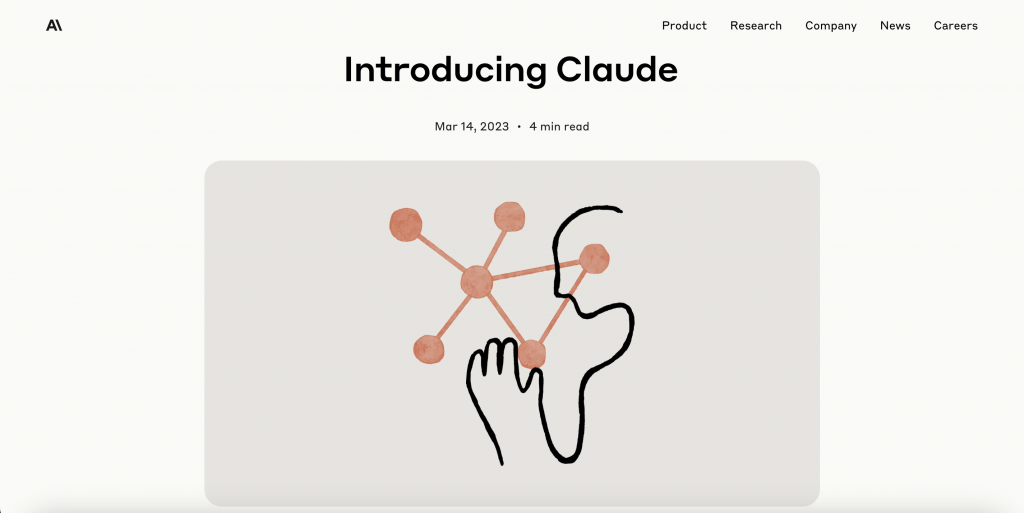
Claude v1 is a large language model developed by American AI startup Anthropic. It is a versatile AI assistant that is specifically designed to simplify website creation, management, and optimization.
With its advanced natural language capabilities, Claude v1 makes it easy for anyone to build, run and grow a website without needing advanced technical skills.
Claude uses a more advanced architecture than other LLMs, which allows it to process information more efficiently and make better predictions.
Best Use Cases:
Website Creation
- Automated management – Claude v1 simplifies website management by automating tedious tasks, allowing site owners to focus on higher-level strategies and marketing content creation.
- Content creation – It can autonomously produce fresh articles based on key topics, respond to customer inquiries using its advanced conversational capabilities, and provide real-time analytics without manual sifting through dashboards.
- SEO – Claude v1 can handle technical optimization to deliver SEO improvements and site speed enhancements in the background. It will recommend and implement changes to boost site performance.
Monetization
- Customer engagement – Claude v1 can transform site monetization by maximizing customer engagement. By analyzing visitor behaviors, the AI model can deliver personalized content, optimize product suggestions for eCommerce platforms, and curate articles that resonate with each visitor.
- Ad customization – Claude v1 can also curate ads tailored to visitor demographics and behaviors to optimize ad revenue. Its customization capabilities can help improve customer retention, amplifying revenue from sales, memberships, and advertising.
Marketing
- Campaign optimization – the foundation model can not only identify ideal audience segments but also auto-optimize campaigns for peak performance. In terms of SEO, it can also craft content aligned to prime search terms.
- Email marketing – you can also automate email marketing campaigns using Claude’s ability to auto-segment contacts and deploy behavior-triggered email messages, enhancing user engagement.
- Refine landing pages – Claude v1 can autonomously craft and refine landing pages by employing A/B testing for better conversions.
How to Choose the Best Large Language Model for Your Website
To optimize your website, it’s crucial to select the right large language model. Here’s how:
Hosting Integration
The performance and success of hosting websites with large language models are fundamentally tied to the underlying infrastructure. Hostinger’s hosting services are specifically optimized for AI-driven websites with demanding computational needs.
Hostinger also offers a suite of AI features, including the AI website generator in its website builder, logo maker, and writer, to make the website creation process both streamlined and beginner-friendly.
Performance and Capabilities
| LLM | Natural Language Processing | Content Creation | Multilingual Support | Facilitates Team Collaboration | Data Privacy |
| GPT 3.5 | Good | Very Good | Good | Through API | Fair |
| GPT-4 | Excellent | Excellent | Excellent | Through API | Fair |
| Gemini | Excellent | Excellent | Excellent | Through API | Good |
| LlaMA | Very Good | Very Good | Excellent | Directly | Fair |
| Falcon | Very Good | Excellent | Excellent | Directly | Good |
| Cohere | Excellent | Excellent | Very Good | Directly | Good |
| PaLM | Excellent | Good | Very Good | Through API | Excellent |
| Claude v1 | Excellent | Excellent | Very Good | Through API | Excellent |
Scalability
As your website grows, you need to ensure your LLM can scale with it. Some LLMs are more scalable than others. You need to choose an LLM that can handle the expected traffic on your website.
Here are the discussed LLMs, along with their scalability quotient:
- GPT 3.5 – suited for moderate to high traffic. Scaling is possible by deploying additional instances
- GPT-4 – adept at managing high traffic. Multiple model instances enable further scaling
- Gemini – built to efficiently handle high traffic loads. Added instances can further increase capacity
- LlaMA – can manage moderate to very high levels of traffic when augmented with more instances
- Falcon – optimized for the highest traffic demands through its multi-query attention capabilities. For even greater loads, you can deploy multiple model instances
- Cohere – primed for high traffic. Additional instances can amplify its handling capacity
- PaLM – optimized for the highest traffic demands. Additional model instances improve load handling
- Claude v1 – proficient at navigating very high-traffic scenarios. Adding multiple instances can extend its range further
Cost and Affordability
Let’s now delve into cost and affordability considerations for your LLM:
- GPT-3.5 – starting at $0.002/1000 tokens, equivalent to approximately 750 words
- GPT-4 – starting at $0.03/1000 tokens
- Gemini – free
- LlaMA – free
- Falcon – free
- Cohere – starting at $0.4/1M tokens
- PaLM – free public preview, paid plans to be announced closer to general availability
- Claude v1 – starting at $1.63/million tokens for Prompt and $5.51/million tokens for Completion
Conclusion
Having the best large language model at your disposal is essential to ensure effective site operation. Since some of the LLMs discussed are still under development, this article also walked you through how large language models are trained.
This knowledge will help you make a more informed decision when introducing language models in your website development endeavors.
Here are our recommendations for the best LLMs for your website:
- Small websites – such as blog sites, can do good with an LLM like GPT-3.5, which can affordably create content; it can also be used for a specific task, such as answering questions and translating languages.
- Medium websites – can benefit from more advanced LLMs, such as GPT-4 or Gemini. They are more powerful than GPT-3.5 and can be used for more complex tasks.
- Large websites – may find open-source LLMs, such as LlaMA, Falcon, or Cohere, more useful. They can facilitate website experience customization and automation to improve visitor convenience.
Ultimately, the best LLM for your website will depend on your budget, your needs, and the type of your website. If you’re stuck between two LLMs, you can always give each one an individual try and pick the one that best suits you.
If you know any other LLMs that are capable of competing with the big players listed above, tell us in the comments section below.
Large Language Models FAQ
Let’s address some frequently asked queries about large language models.
How Can I Benefit From Using LLMs for Website Creation?
Large language models (LLMs) offer a versatile range of benefits for website creation. They can produce high-quality content, including blog posts, articles, and product descriptions. Additionally, they can address visitor inquiries, enhancing user experience and potentially boosting site traffic.
For global reach, LLMs facilitate website translation into various languages. Furthermore, they can enhance user engagement by personalizing website experiences, suggesting products or content tailored to visitors’ interests.
Can Language Models Like GPT-3.5 and GPT-4 Help in Monetizing My Website?
Large language models such as GPT-3.5 and GPT-4 are game changers when it comes to website monetization with AI. They can produce compelling content, drawing visitors and prolonging their site engagement. Moreover, they enable the crafting of precise advertisements with higher click-through potential. Additionally, they amplify sales by tailoring the user experience for each visitor.
How Are Large Language Models Trained to Be So Powerful?
Large language models are trained using vast datasets containing billions of words through a process called language modeling. This process allows LLMs to learn the statistical relationships between words and phrases. The immense data volumes and iterative refinement of the training improves their understanding of intricate language patterns to produce coherent and grammatically correct text.
What Are the Most Popular Large Language Models?
Some of the leading large language models include GPT-3.5, GPT-4, Gemini, Cohere, PaLM, and Claude v1. These LLMs excel in tasks such as text creation, language translation, crafting creative content, answering queries, and code generation.
Do Large Language Models Understand What They’re Saying?
While large language models can produce relevant and grammatically correct text, they don’t truly understand content as humans do. Their strength lies in recognizing patterns from vast datasets, not genuine comprehension.
